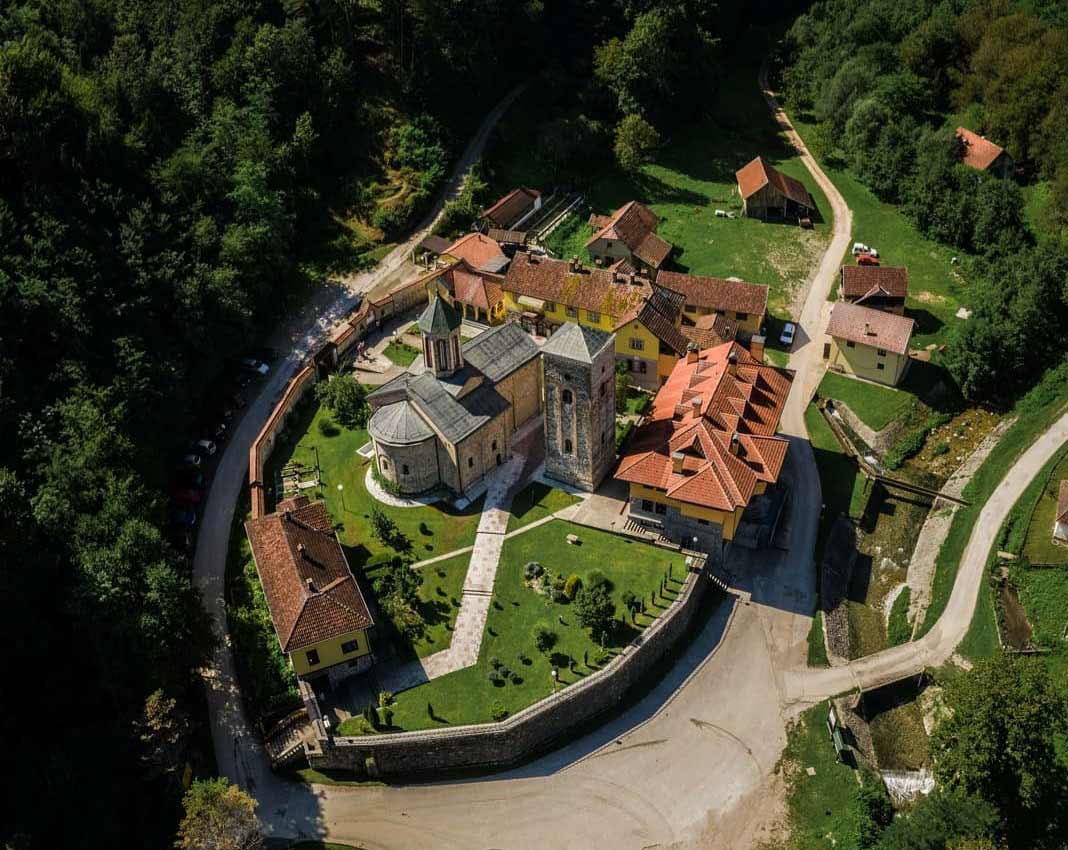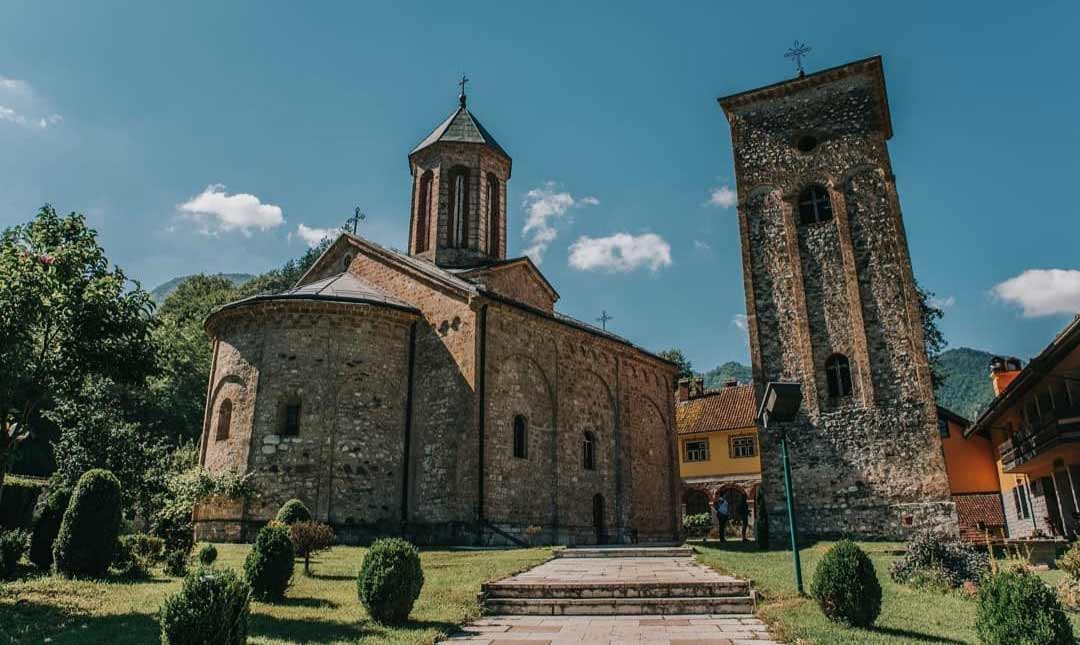Raca Monastery
Monasteries in Serbia are the unique testimonies of history, places where the spirituality, tradition, and culture of Serbia were preserved. The next stop on our journey through Serbia is hidden behind the river Raca (in Serbian: Rača), tucked away in beautiful nature. This is a story of the Raca monastery (in Serbian: Manastir Rača)
According to tradition, the Raca Monestary is the endowment of the Serbian king Dragutin. It was built in 1275, 6 km from the confluence of the Raca and Drina rivers, and only 7 km from Bajina Bašta. The Raca Monestary belongs to the Diocese of Žička of the Serbian Orthodox Church and represents an immovable cultural good and a cultural monument of great importance. In monasticism, he was called Theoctist.

Photography by: Dragiša Stojiljković
Raca Monastery – history testimonials
The Raca Monastery was built within the former Sokolska Nahiya. During its long history, it has been demolished, rebuilt, and even rebuilt from scratch several times. With the fall of the Serbian despotism before the Ottoman rule, the first suffering of the monastery took place. Further demolition and destruction of the Raca Monastery took place immediately after the Great Migration in 1690, and after that, it was destructed again after the collapse of the First Serbian Uprising in 1813.
Raca Monastery - First renovation
For more than a century, in the period from 1690 to 1795, the monastery was in ruins. The first renovation of the monastery took place in 1795. The key moment for the reconstruction is the departure of the monk Milentije Stefanović from the Tronosa (Tronoša monastery) monastery ( https://en.wikipedia.org/wiki/Trono%C5%A1a_Monastery ) to the Holy Land of Jerusalem. Archimandrite and spiritual teacher of the monk Milentije Stefanović, Stefan Jovanović, providing sufficient funds to his protégé, orders him to obtain a permit for the renovation of the Rača monastery upon his return from Jerusalem.
After receiving a recommendation from the Ecumenical Patriarch, the monk Milentije, together with the hieromonks Isaiah and Joseph, in 1795 began the reconstruction/construction. The new church was built almost from the ashes in a year, and on Christmas of the same year (1796), the church was consecrated. A very important role in the reconstruction was played by the peasants who helped the reconstruction at their own expense, bringing in timber and stone.

Photography by: Dragiša Stojiljković
Re-demolition of the Raca Monastery
The collapse of the First Serbian Uprising in 1813 brought new uncertainty and fear to the monks. Many of them fled the monastery in fear of the Turkish retaliation. Their fear turned out to be justified, and soon after the collapse of the uprising, Memshir-aga crossed the Drina with his army and surrounded the monastery. In that way, the monastery of Rača has burned again only 18 years after the renovation. In the same year, Haxhi-Milentije fled to Austria together with the leader of the uprising, Karadjordje. The beautiful nature that adorned the surroundings of the monastery was completely ruined. The orchards and trees around were completely cut down, and the monks who found themselves there were brutally killed. Many of them sought refuge in the Tronosa monastery, which was burned down shortly afterward.
Second renovation
After the Second Serbian Uprising, the desire to rebuild the Rača monastery reappeared. Haxhi-Milentije, knowing that he was known as Karadjordje's associate, did not hurry much to return to the country, waiting for the ideal moment. Precisely, the great desire for renewal created a favorable climate for the return of Haxhi-Milentije. In the spring of 1816, Milentije crossed the Sava River and placed himself at the service of Duke Miloš, since when he had to ask for permission to rebuild.
The duke himself also ordered that anyone who helped rebuild the monastery be exempt from taxes. Although the response of the population was great, due to the great misery and poverty that reigned, the help was not enough. Hadzi-Milentije was forced to ask Duke Milos again for the funding, that he received after some time. In the next 6 years, Hadži-Milentije did not want to ask anyone for help anymore, so the church was left without an iconostasis and frescoes. Unfortunately, he died on March 27, 1824, so it took a full 26 years to paint the beautiful iconostasis that adorns the Church of the Ascension of Christ in the Rača Monastery when he was painted by the painter from Šabac, Georgije Bakalović (1840). The frescoes of the church were awaited until 1853 when they were painted by the painter Dimitrija Pesniković.












